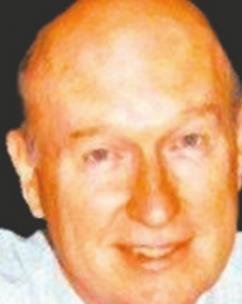Creative vision
Creative people are fascinating. They welcome my endless questions but most cannot tell where their ideas come from. I suspect you and I know.
The 2 most creative advertising copywriters I know …
This item is available in full to subscribers.
Subscribe to continue reading. Already a subscriber? Sign in
Get 50% of all subscriptions for a limited time. Subscribe today.
Please log in to continueNeed an account?
|
Creative vision
Creative people are fascinating. They welcome my endless questions but most cannot tell where their ideas come from. I suspect you and I know.
The 2 most creative advertising copywriters I know cannot tell you where it domes from. To them, it is a gift.
Dr. Elmer Gates made a science of creative problem solving. He was a contemporary of Thomas Edison, the best known inventor of his time. The 2 men had dissimilar backgrounds. Edison had little formal schooling but Gates was skilled in many sciences and had an extensive education.
You may have never heard of Gates but he was recognized throughout the world of science and his scientific inventions, as disclosed by Patent Office records, more than twice outnumbered Edison’s.
He and Edison began their careers by depending at on their imaginations.
Gates developed his into a creative vision through constant application and use.
In his later years, he earned his living entirely by the application of his highly developed power of creative vision.
His method is worthy of your consideration because it proves that you may enhance your own imagination until it leads to the power of creative vision.
Your mind may create some good ideas if you don’t keep it too busy with poor ones, advises Napoleon Hill, author of “Think and Grow Rich” and other success books.
Gates’ method of applying his creative vision was sitting in a dark room and waiting patiently for solutions to arrive.
When Gates wanted a solution to a problem, he went into a soundproof room, closed the door, sat at a table with pencil and paper and turned off the lights.
He concentrated his thoughts on the problem and waited for its solution.
Often ideas would immediately begin to flow into his mind. At other times he waited for an hour or more before they began to make an appearance.
His method was not fool-proof. Some times no ideas came at all,
Gates refined and perfected more than 250 patents by this method. These patents covered ideas which inventors who had less creative vision undertook to perfect.
He added to their own ideas the finishing touches that were needed.
His method was so simple many investors dismissed it. But he began by examining the application for the patent until he found its weakness, using his own testing laboratory or the US Bureau of Stand ards.
Then he went into his soundproof room, with the patent application and the drawings explaining the application, placed them before him on the table and waited for the solution. When it appeared, it came in the form of an idea which provided the information he was seeking.
Gates said the source of ideas was:
• Knowledge from experience, observation and education – our memories.
• Knowledge from others who are contacted by mental telepathy.
• Infinite Intelligence, where all knowledge is stored and may be contacted through our subconscious minds.
“When I sit for ideas, I may tune in to one or all of these sources,” he said.
If you have a problem, give Gates’ method a try. It may work for you.
Next: Never give in.
Need some inspiration?
Are you dissatisfied with your life and looking for a new opportunity? Get a free copy of “Uncover Your Inner Sales Genius” at JerryBellune.net
Other items that may interest you










Comments
No comments on this item Please log in to comment by clicking here